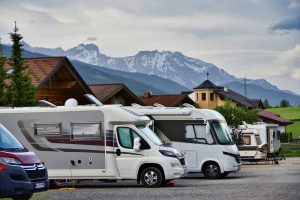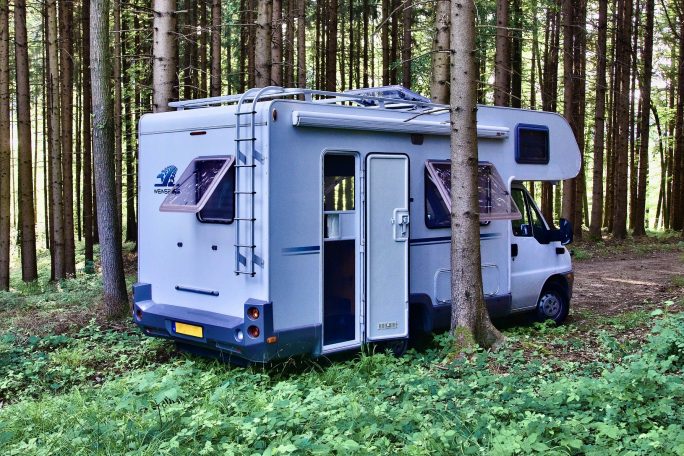What does self contained RV mean?
Ever wondered what does self-contained RV mean? RV, of course, means recreational vehicle. When it comes to RV’s, there is a lot of interchangeable terminologies. Rv’s are interchangeably known as motorhomes and campervans. In the USA, the term RV is most popular in contrast to Europe, where motorhome is the common name. Regardless of what name you prefer
A self-contained RV is a vehicle with all the functions needed without relying on external facilities or resources.
Essentially a self-contained RV is a home on wheels. Therefore you have everything from electricity to the toilet on board. Water for cooking and showering. A kitchen, toilet and sleeping area all in the vehicle.
The two types of self contained RV
The first type is towable RVs. Known in the USA as a trailer or a caravan in the United Kingdom. You tow the RV to where you are staying, then when starting, it’s a self-contained living space to enjoy.
The second type of self-contained Rv is motorised. These are RVs, motorhomes and campervans.
Both have their benefits and downfalls; however, it’s all about personal preference. Both motorised and towable RVs have a large community of users.
Classes of RV/Motorhomes/Campervans
Now you know what a self-contained RV is, it is time to discuss classes. The class system is a way to differentiate RV,s by a variety of factors. These include the size of the RRE and now many people you can fit in and so on. There are three names for an RV: recreational vehicle, motorhome and campervan. There are three classifications for these self-contained homes. Below each class is defined and explained to get clarity on this matter. For the below, we will be discussing the United Kingdom classification of RVs.
Class A
A class A RV is defined as a motorhome and not a campervan in the United Kingdom. They are the most common RV ranging up to 30 feet in Europe and up to 40 feet in America. They are big self-contained homes containing all the amenities one could want. In some cases, these class A motorhomes can contain up to 8 people. They are that big. This size and luxury come at a cost. Usually starting at around £40,000 from new they aren’t cheap. For this money, you can expect everything you would at home on board. A range of beds, a kitchen, shower and toilet facilities and as living come dining area. With their large size and length class, motorhomes weigh a lot. It’s this weight that means a normal drivers license won’t allow you to drive one.
As the DVLA states, your age and the maximum authorised mass (MAM) will determine what additional training and license will be needed to enable you to drive a motorhome.
- If your vehicle has a MAM of 3.5 to 7.5 tonnes, you will require a C1 category licence which cost anywhere from £100-£200
- For vehicles with a MAM over 7.5 tonnes, a category C licence is required, a more intensive course that costs around £1000 and can take up to a few months to complete.
Class A motorhomes will always require a category C licence, which is worth knowing before purchasing one. Due to their larger size, these extra tests and qualifications are justified. With this training, you can become confident and competent driving a big class A motorhome.

Class B
Class B RVs are Campervans, not motorhomes. Regardless of whether they are purpose-built or a conversion class, B is exclusively campervans. These vehicles can be driven on a normal license and weigh up to 3.5 tonnes. For this reason, they are the smallest of the three. It’s likely a class B vehicle is a van with a living area. The real benefits of these vehicles are their practicality. To have a campervan officially registered by the DVLA, strict criteria must be met. Once you have registered the vehicle as a campervan, you can get specialist campervan insurance to protect your vehicle.
Class B vehicles are on the more affordable end of the scale. An increasing amount of people decided to take on these vehicles for its exact reason. As you have the opportunity to customise the vehicle totally, you can create exactly what you want. Vehicle maintenance and miles per gallon are both like to be far cheaper than Class A motorhomes. In summary, a Class B vehicle can be anything that is converted.
Class C
Class C are the smaller, more practical motorhome. They’re essentially a smaller version of a Class A motorhome. Class C motorhomes will have most of Class A motorhome facilities just without the bigger price tag. Up to 35 feet in length, they are by no means small. Built on a coach chassis, they have enough room to make it like a home on wheels. Class C is the goldilocks size between a Class A and B. Not too big, not too small, just right for the likes of a family. Class C motorhomes practicality, coupled with a relatively affordable price tag, makes them highly popular.
What does self contained RV mean?
A self-contained RV is a vehicle with all the functions needed without relying on external facilities or resources. They come in a range of shapes, weights and sizes, and it’s these criteria determine what class the vehicle is in. Therefore you match the class of RV to your needs. So whether you want a huge class A motorhome or a Class C stealth camper, there is a wide range to choose from.

